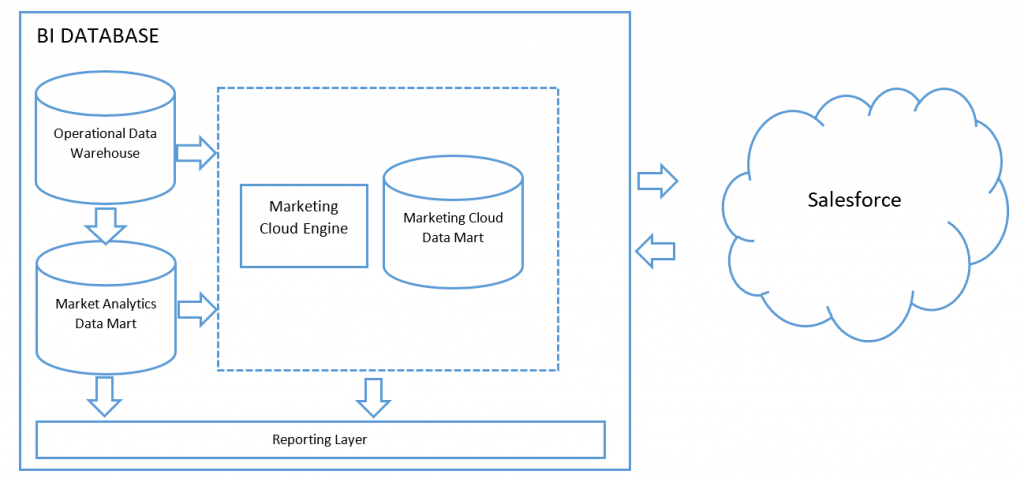By Fernando Ponte
Senior Business Intelligence Developer at Stellar
If you ask what benefits a Business Intelligence implementation brings to a company, experts usually come up with some common explanations.
They say BI will help with your analytics, data mining, business performance management, what-if analysis and decision making. However, Business Intelligence implementations can provide functionalities that go beyond those natural features.
Business Intelligence can close the loop of business processes and save time by removing manual intervention using automation. The person that once used to manually manipulate and wrangle data will now only need to monitor outcomes and intervene when necessary.
Expanding BI using a new Salesforce module
This is the case of Trustpower.
The company decided to implement a new Salesforce module to automate and speed up the customer renewal process. The process itself is complex and it is not the intention of this article to discuss its implementation in detail. What this article is for is highlighting that there is more to BI than just reporting.
Stellar first implemented the Trustpower Business Intelligence platform in 2012. For this project, Stellar automated the data flows between the BI database and Salesforce.
The Market Analytics Team used to manage the core information for this process hosted in the Trustpower BI database. The team would read and prepare the data using Trustpower’s Operational Data Warehouse. They enriched the data with other sources and saved them within their own Analytics Data Mart (also hosted inside Trustpower BI Database).
The BI Team, led by Stellar on this case, implemented an engine to orchestrate that process, prepare and send datasets as well as capture returning information from Salesforce.
You can see a simplified view of the architecture and the information flow below:
In summary, the data now flows into the Marketing Cloud Data Mart (MC) through an Extract Transform and Load (ETL) engine that sends data back to Salesforce modules. Salesforce returns data, synchronized in the second stage, back into Marketing Cloud Data Mart.
This design flags the records with the outcome of the process. Among other benefits, all the data stored in the Data Marts provide the ability to monitor the process and create forecast reports. This information can answer questions like: “How many communications will be sent this week and in the coming weeks?”. The Marketing Cloud also reports the outcome of the data processed by Salesforce.
No loss of functionality during the lockdown
The design of the engine behind this allows the start/stop of its different steps. Business owners can fine-tune communications with customers, as well as identify errors and/or adjust to market needs.
The most recent example of this relates to the COVID-19 lockdown Level 4 when all marketing activities were suspended. The business was able to stop all communication while on that level and resume communications on Level 3, with no loss of functionality.
Other functionalities are also in-built to avoid duplicate communications being sent to customers and the engine provides information used by Sitecore to render landing pages and success messages.
By holding the historical data in this model, it also provides data lineage and the ability to investigate the flow of information at any point where the data is inside the Marketing Cloud.
Some of the business benefits realised included:
- A unique repository within the Trustpower Business Intelligence Database
- No more manual data manipulation
- Process automation saves users’ time and allows them to focus on value-added activities
- Data lineage and auditability
- Analytics and Reports are available
- The ability to easily stop, adjust the process and resume without impacts.
In summary, a BI implementation can easily expand and provide additional benefits to the business. Some may argue this is not what a BI system should be doing and this is a fair comment but it is also true that limiting the use of BI for only Analytics and Reporting can reduce its reach within any enterprise.






